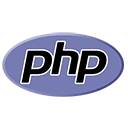Serverless computing with AWS Lambda allows you to run code without provisioning or managing servers. In this guide, we'll explore how to develop serverless PHP applications with AWS Lambda, including sample code and best practices:
1. Introduction to AWS Lambda
AWS Lambda is a compute service that runs your code in response to events and automatically manages the computing resources for you. It supports a variety of programming languages, including PHP.
2. Setting Up the AWS Lambda Environment
To develop PHP-based Lambda functions, you'll need to set up your environment and tools. Install the AWS CLI, configure your AWS credentials, and use the AWS Lambda Console to create a new Lambda function.
3. Writing Serverless PHP Functions
You can create serverless PHP functions using the AWS Lambda runtime for PHP. Your PHP code should define a handler function that Lambda will invoke when the function is triggered. Here's an example of a simple Lambda function in PHP:
// Define your handler function
function myLambdaHandler($event) {
// Your PHP code here
return "Hello, AWS Lambda!";
}
?> 4. Triggers and Event Sources
AWS Lambda functions can be triggered by various event sources, such as API Gateway, S3 bucket changes, or custom events. Choose the appropriate trigger for your application's needs and configure it in the AWS Lambda Console.
5. Deploying and Testing Lambda Functions
Use the AWS Lambda Console or the AWS CLI to package and deploy your PHP function. Test your Lambda function locally and in the AWS Lambda environment. Here's a sample deployment command using the AWS CLI:
aws lambda create-function \
--function-name my-php-lambda \
--runtime provided.al2 \
--role your-execution-role \
--handler myLambdaHandler \
--code S3Bucket=my-bucket,S3Key=my-lambda.zip
6. Environment Variables and Configuration
Use environment variables to configure your Lambda function. This allows you to separate configuration from your code and easily adjust settings for different environments. You can set environment variables in the AWS Lambda Console or using the AWS CLI.
7. Logging and Monitoring
Utilize AWS CloudWatch for logging and monitoring your Lambda functions. Configure CloudWatch logs to capture function output and errors, and set up alarms to be notified of issues.
8. Security and Permissions
Implement proper security and permissions for your Lambda function. Use AWS Identity and Access Management (IAM) to define roles and policies for your function's execution role, ensuring it has the necessary permissions to interact with other AWS services.
9. Conclusion
Developing serverless PHP applications with AWS Lambda offers a scalable and cost-effective solution for various use cases. By setting up your environment, writing serverless functions, configuring triggers, and managing deployment and monitoring, you can create powerful serverless applications with PHP.

